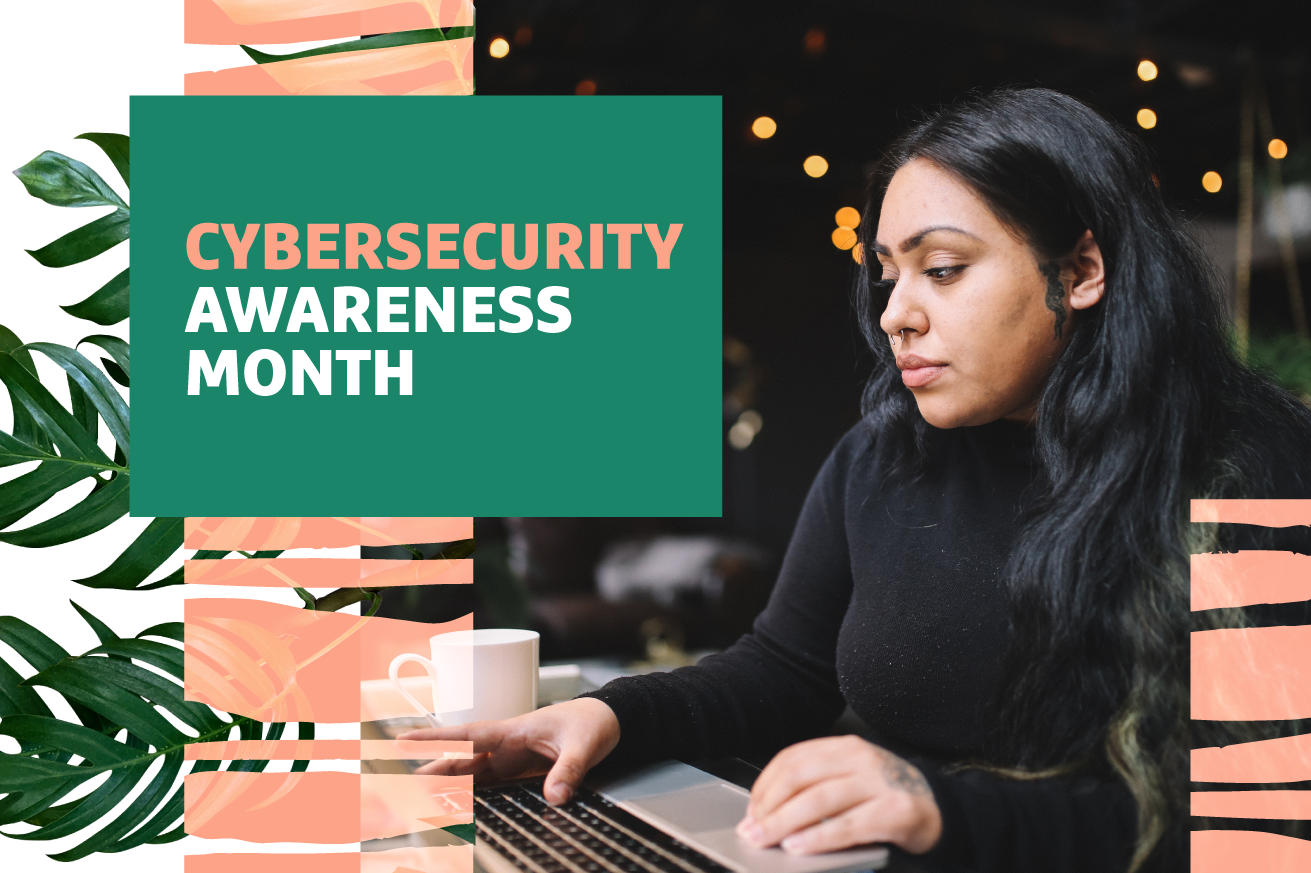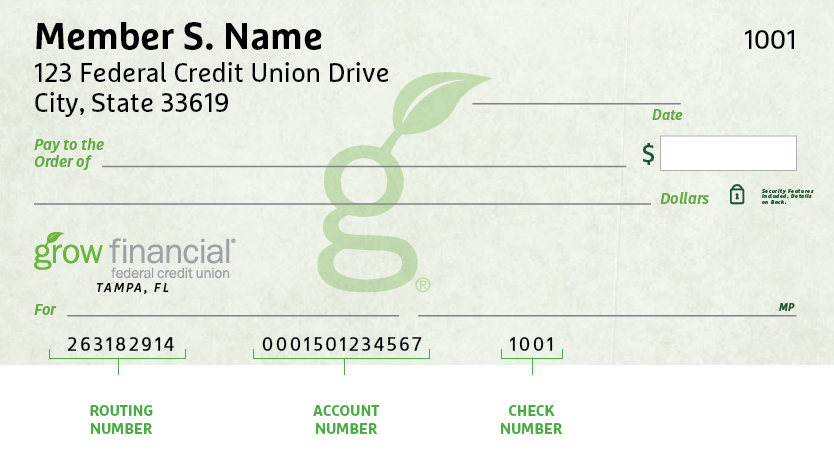- Personal
- Membership
- Membership
- Rates & Fees
- Checking
- Checking
- Personal Loans
- Personal Loans
- Wealth Management
- Investment Services
- Financial Advisors
- Resource Center
- Business

September 23, 2024
Cybersecurity Awareness Month: Five Tips to Avoid Scams
October is Cybersecurity Awareness Month, and it’s never been more important for individuals and organizations to take proactive steps to enhance their cybersecurity.* In 2024, the average cost of a data breach jumped to $4.88 million, up from $4.45 million in 2023 — a whopping 10% spike and the highest increase since the pandemic. Let’s talk about ways you can stay safer from scams.
1. Use strong, unique passwords.
For the second year in a row, stolen or compromised credentials were one of the two most prevalent root causes of data breaches.*
One data breach could put all your accounts with the same password at risk. Imagine this: A word puzzle game you love experiences a data breach in which hackers gain access to users’ email and password combinations. Then, scammers test those passwords at financial institutions, email platforms and social media sites. That’s why you don’t reuse passwords — even for throwaway accounts that seem low-risk.
Limit the damage from data breaches by using strong, unique passwords. Trouble remembering passwords? Try using a password manager, which can securely store all of your passwords, tell you when you have weak or reused passwords, and generate stronger passwords for you. Learn more about creating strong passwords.
2. Don’t click links or open attachments.
Phishing was the other top method of online fraud in 2024.* That’s when scammers target your personal information online by pretending to be an organization or individual you know, such as a bank, retailer or medical provider. Smishing, which is the same scam but via text messages, is also increasing. Here are a few increasingly common scam messages:
- “Your delivery driver is almost there. Track your package now with this link.” This fraudulent link could install malware on your device or solicit personal information. Avoid clicking!
- “It’s your bank. Did you spend $5,000 at Birdie Airlines? If not, click this link to recover the money now.” This trick uses urgency to convince you that your money is at risk. The real risk is clicking that link!
- “The candidate needs your support! Donate now.” With election season in full swing, watch out for election season scams. If you choose to donate, only do so through official campaign websites — not through an unsolicited text message.
To stay safer, don’t open attachments or click links in emails or text messages that you weren’t expecting. When in doubt, always verify the information first by contacting the supposed sender directly through other means.
3. Double up on security with MFA.
We love multifactor authentication (MFA) and suggest you enable it whenever possible. MFA requires more than one authentication method from different sources to verify your identity.
It adds a second layer of protection to your accounts by requiring an extra step, such as a text message confirmation code, before you can log in.
4. Protect your computer.
Your device: “A system update is available. Install now?”
You click “Remind me later.”
We’ve all done it. But today, in the spirit of Cybersecurity Awareness Month, take the time to update your devices! Stay safer from online fraud by installing security updates promptly and using antivirus software. For more details, check out the FBI’s Internet Safety: Protect Your Computer resource.
5. Report fraud quickly.
Do you think you’ve been the victim of an online crime? File a report with the FBI’s Internet Crime Complaint Center (IC3) as soon as possible, and let your financial institutions know so they can be extra vigilant when it comes to your accounts.
It’s important to protect yourself online, not only during Cybersecurity Awareness Month but all year long. We hope these tips help keep you safer from fraud and scams. Learn more about preventing identity theft.
*IBM. Cost of a Data Breach Report 2024. Accessed August 29, 2024. https://www.ibm.com/security/data-breach
Posted In:
How to Find Your Routing & Account Numbers
When you make a payment online, by phone or on a mobile device, you may be asked for our routing number and your checking account number. Credit unions and banks use these numbers to identify accounts and make sure money gets where it’s supposed to be. You’ll also need to provide your routing and checking account numbers for:
- Direct deposits
- Electronic checks
- Military allotments
- Wire transfers
Where to Find Your Routing & Checking Account Numbers
Your personal checks include both our routing number and your account number, as shown on the Grow check example below.

Don’t have a Grow check? No worries.
Visit any Grow store and ask for a Direct Deposit Form. It lists both your routing number and checking account number.
Making a Loan Payment
Incorrect Phone Number Alert
We’ve identified an incorrect phone number listed in a letter sent to a select group of new members with auto loans. The incorrect number is NOT affiliated with Grow. Please be sure to use our official phone number, 800.839.6328, which you can verify on our Contact Information page. For your security, keep your personal information safe and avoid sharing it over the phone, email or text message. We will never ask you for your credit or debit card security code, expiration date or PIN, login security codes, or your online banking password.
When it comes to making payments, we try to make it as painless as possible to pay your loan every month. We have several different ways to pay, including convenient online options.
Pay Online
You have two ways to pay online by transferring funds from another bank or credit union.
- Grow Online Banking (Preferred payment method for any loan)
This is the simplest way to pay your loan. You can make one-time payments or set up automatic recurring payments in Grow Online Banking. Once you log in, select “Transfer/Payments” from the menu. If you’re not enrolled in Grow Online Banking yet, you can set up your account in just a few minutes.
Log In
- Debit Card or ACH (Available for auto, personal loans and HELOCs)
Note: ACH and debit card payments are not available for credit cards or most mortgages, except HELOCs.
We accept ACH payments with no additional fees, consumer Mastercard® and Visa® debit cards with a convenience fee of $4.95, or commercial Mastercard® and Visa® debit cards with a convenience fee of 2.95% of the payment amount. To get started with an online ACH or debit card payment, select Pay Now below.
Pay Now
Pay by Mail
You can also pay any Grow loan by check through the mail. Please remember to include your account number and Grow loan number on the check. (For credit card payments, please do not write your 16-digit credit card number on the check, which can cause a delay in processing the payment.)
Address for auto, credit card, personal loan and HELOC payments:
Grow Financial Federal Credit Union
P.O. Box 75466
Chicago, IL 60675-5466Address for personal first or second mortgages and home equity payments:
Grow Financial Federal Credit Union
P.O. Box 11733
Newark, NJ 07101-4733You Are About To Leave GrowFinancial.org
At certain places on this site, there are links to other websites. Grow Financial Federal Credit Union does not endorse, approve, represent, certify or control those external sites. The credit union does not guarantee the accuracy, completeness, efficacy, timeliness or accurate sequencing of the information contained on them. You will not be represented by Grow Financial Federal Credit Union if you enter into a transaction. Privacy and security policies may differ from those practiced by the credit union. Click CONTINUE if you wish to proceed.
